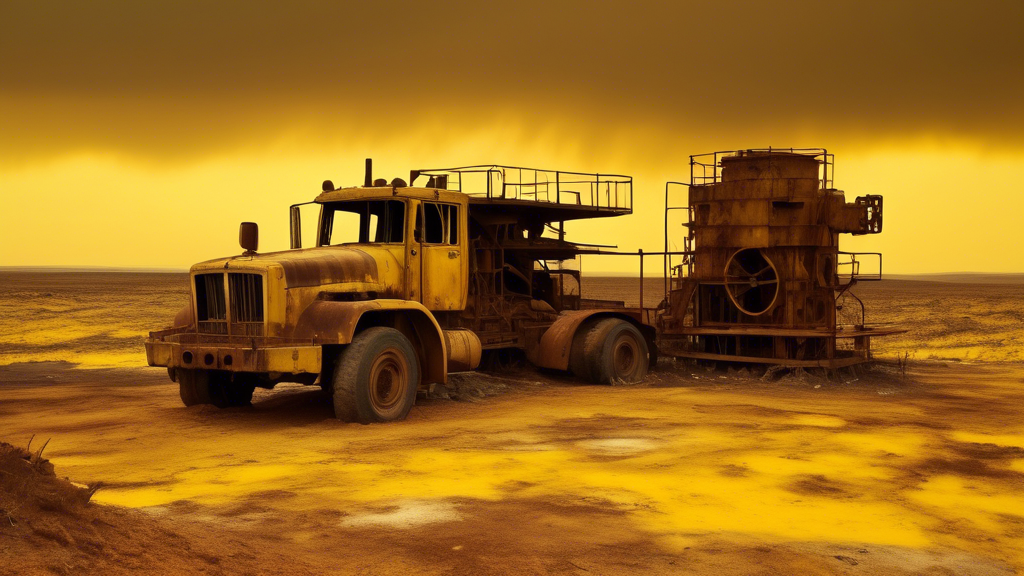Table of Contents Show
Environmental Consequences
Water Contamination
Uranium mining poses a significant threat to water resources. Mining operations can contaminate surface water and groundwater through the release of heavy metals, radioactive materials, and processing chemicals. This contamination can render water sources unsafe for drinking, agriculture, and aquatic life, impacting both human health and ecosystems.
Land Degradation
The process of uranium extraction often involves large-scale land disturbances, including deforestation, excavation, and the creation of waste rock piles. These activities can lead to soil erosion, loss of biodiversity, and habitat destruction. Additionally, the long-term storage of radioactive waste from uranium mining presents challenges in preventing land contamination and ensuring environmental safety for future generations.
Air Pollution
Uranium mining and processing can release radioactive dust and gases into the atmosphere, contributing to air pollution. Radon, a radioactive gas, is a particular concern as it can accumulate in enclosed spaces and increase the risk of lung cancer. Dust from mining operations can also contain heavy metals and other harmful substances, posing respiratory risks to nearby communities and workers.
Health Impacts
Cancer Risks
Exposure to uranium and its decay products, such as radon and radium, has been linked to an increased risk of developing various types of cancer, including lung cancer, bone cancer, and leukemia. Miners, residents of communities near uranium mines, and individuals exposed to contaminated water or soil are at higher risk.
Respiratory Problems
Inhalation of radioactive dust and gases from uranium mining can cause respiratory problems, such as chronic obstructive pulmonary disease (COPD) and pulmonary fibrosis. These conditions can lead to difficulty breathing, coughing, and other respiratory symptoms.
Other Health Issues
Uranium exposure has also been associated with kidney damage, reproductive problems, and developmental issues in children. The long-term health consequences of uranium exposure can be severe and may not manifest until years after exposure.
Economic Considerations
Job Creation
Uranium mining can create jobs in rural areas where economic opportunities may be limited. Mining operations require a workforce for extraction, processing, transportation, and reclamation activities. However, these jobs often come with health and safety risks, and the long-term economic sustainability of uranium mining is questionable due to fluctuating uranium prices and environmental concerns.
Energy Production
Uranium is a key fuel source for nuclear power plants, which provide a significant portion of electricity generation in the United States. Nuclear power is considered a low-carbon energy source, as it does not directly emit greenhouse gases during operation. However, the mining and processing of uranium, as well as the management of nuclear waste, raise environmental and safety concerns.
Community Impacts
Uranium mining can have both positive and negative impacts on local communities. While it can bring economic benefits through job creation and tax revenue, it can also lead to environmental degradation, health problems, and social disruption. The long-term effects of uranium mining on communities can be complex and far-reaching.
Regulatory Framework
Environmental Protection
The Environmental Protection Agency (EPA) and state agencies regulate uranium mining activities to minimize environmental impacts. Regulations address water quality, air quality, waste management, and land reclamation. However, concerns remain regarding the adequacy of these regulations and their enforcement in protecting public health and the environment.
Worker Safety
The Mine Safety and Health Administration (MSHA) sets safety standards for uranium mines to protect workers from hazards such as radiation exposure, cave-ins, and equipment accidents. However, ensuring worker safety in uranium mines remains a challenge due to the inherent risks associated with radioactive materials and the potential for long-term health effects.
Tribal Considerations
Uranium mining has historically impacted Native American tribes, as many uranium deposits are located on or near tribal lands. Tribal communities have raised concerns about the environmental and health effects of uranium mining, as well as the cultural and spiritual significance of the land. Consultation and collaboration with tribal governments are crucial in addressing these concerns and ensuring responsible uranium mining practices.










